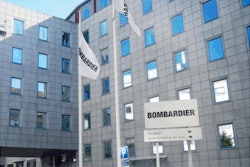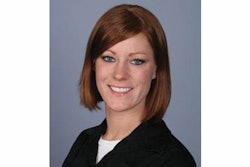
Since its inception way back in the 1980s, sales and operations planning (S&OP) developed into an accepted global practice that transformed many supply chains. But are there differences in the way it is run in, say, North America vs. Europe vs. Asia, etc.? This can be vital information for companies looking to expand their global reach.
A recent study by the Aberdeen Group, Sales and Operations Planning: A Global Comparison, took a look at that very question. In the report, authored by Bryan Ball, Aberdeen surveyed 100 enterprises, and evaluated the differences between regions in terms of pressures felt, capabilities and technology enablers in place. The study segmented the data by geographic regions: North America, Europe (EMEA) and all others (Asia, South America and the Caribbean).
“Understanding how and why any differences exist may suggest possible solutions to companies in other regions tackling those same problems that might not have previously been considered,” Ball wrote in the study.
Worldwide Pressures
The study looked at pressures faced by all companies in each geographic region. They included customer mandates for faster, more accurate fulfillment; management of increasingly global supply chains; reduction of supply chain operating costs; and improving top-line revenue.
Not too surprisingly, the No. 1 pressure for all regions was customer mandates, more so for EMEA (55 percent) and all others (54 percent) than North America (46%). The nature of the demands also changes depending upon region. For example, it could be packaging, engineering support, marketing, field support or any number of other concerns.
North American companies, the study shows, are more concerned with growing their top-line revenue (46 percent) than the other two (all others at 38 percent; EMEA at 23 percent) which, the study says, may reflect the maturity of the North American market.
“In a mature market, competition and the battle for revenue share are the keys to expanding. In emerging markets, growth may be a function of being the first to market with speed and execution being more important factors to winning,” Ball writes in his report.
Worldwide Process Capabilities
Best-in-class was added to the mix for this portion of the survey. Surprisingly, North America lags in all categories in terms of likelihood to have the capabilities in place. According to the study, this may be because a disproportionate number of these companies not in the best-in-class (based on performance metrics) lag further behind in North America than other regions.
The all others region actually is a leader in many categories, and EMEA typically falls between North America and all others. The categories include:
- Evaluating constrained planning scenarios during supply/demand balancing.
- Evaluating unconstrained planning scenarios during supply/demand balancing.
- Responding to unplanned events in a timely manner that aligns with S&OP objectives.
- Performing gap analysis between financial and S&OP plans, and take corrective actions.
Technology Enablers
The North America group is more than twice as likely to be using legacy systems (67 percent, just ahead of best-in-class at 63 percent) than EMEA (33 percent) and all others (25 percent). The study surmises that, in more mature markets, the technology is older and lags behind the emerging markets in capabilities.
Another interesting factor uncovered in the study is that the North America group is less likely to have integrated enterprise resource planning (ERP) modules in place (38 percent compared to 55 percent for best-in-class and 73 percent for all others).
“This is most likely due to dealing with legacy systems in North America that developed independently rather than as an integrated system,” Ball writes. “Having integrated modules reduces the system-to-system handoffs and separate data models that might exist with applications that are not integrated and must share information between them. Any extra interfaces, or handoffs, build in delay and potential for error. An underlying principle in supply chain management is to minimize delay or system latency in order to increase process speed and improve the time to information and decision.”
Recommendations
“Comparisons by regions reflect that the more mature markets lag in enablers and in capabilities,” the report says. “Emerging markets reflected by the all other group are ahead technologically since thy have invested more recently and are not encumbered by legacy systems. Compared to the best-in-class, the EMEA region appears to be further ahead as far as having established a formal sales and operations planning process, and leads in the category of formalizing a demand planning process, similar to best-in-class.”
Following are the report’s recommendations for each region:
North America
- Establish formal S&OP processes.
- Upgrade from legacy systems for planning capabilities.
- Upgrade for more integrated systems.
- Involve sales and marketing in forecasting processes.
EMEA
- Establish a formal demand planning system.
- Upgrade technology for constrained planning.
- Upgrade technology for more integrated systems.
- Implement formal S&OP specialty systems.
All Others
- Establish a formal S&OP process.
- Integrate financial planning and feedback into S&OP.
- Establish formal demand planning system within S&OP process.
“As new markets equip themselves with better tools, the competitive edge will shrink over time for those on legacy systems,” the report concludes. “The caution is to avoid complacency and continue to upgrade selectively to improve your capabilities.”
To read the entire report, please visit http://www.aberdeen.com/assets/report-preview/7854-RA-sales-operations-planning.pdf.















